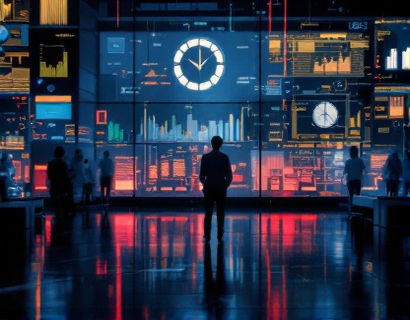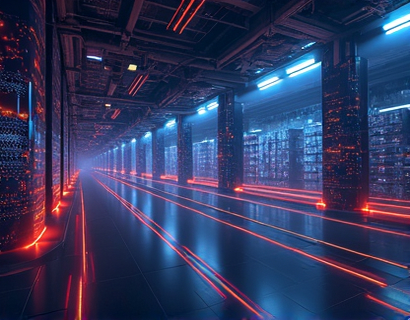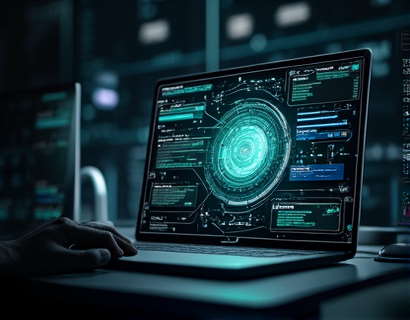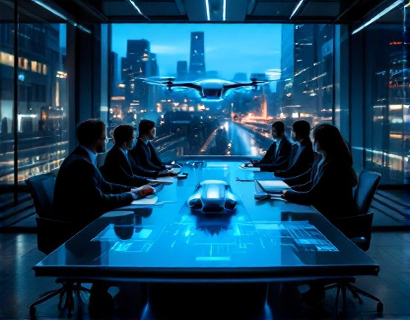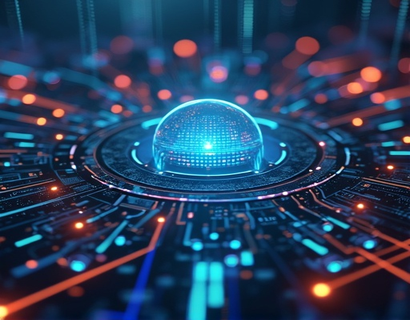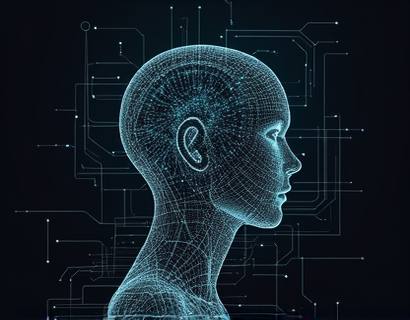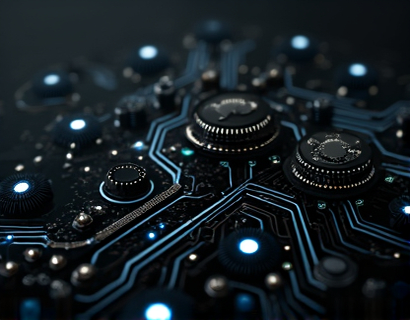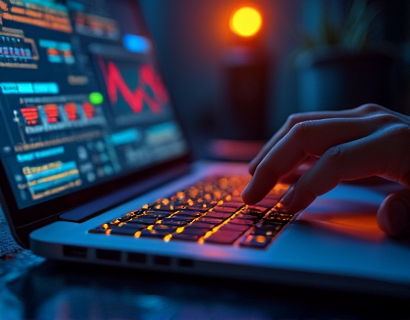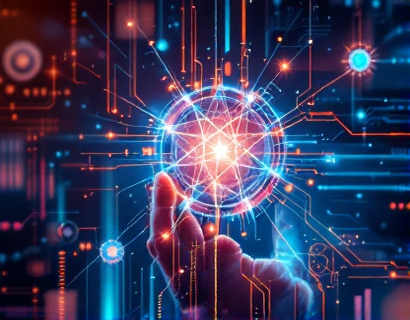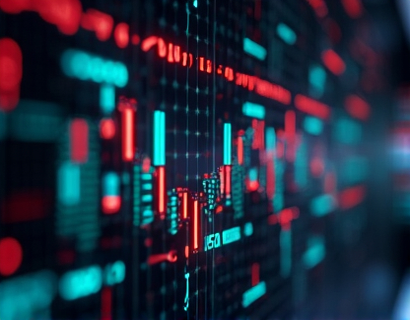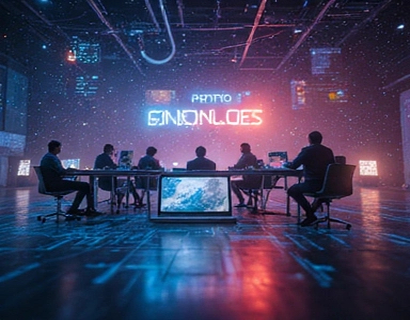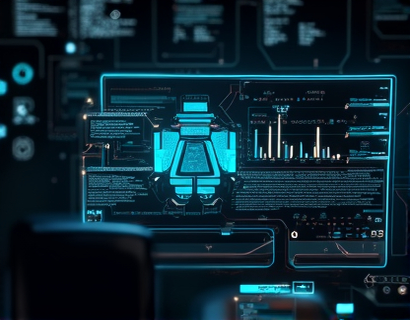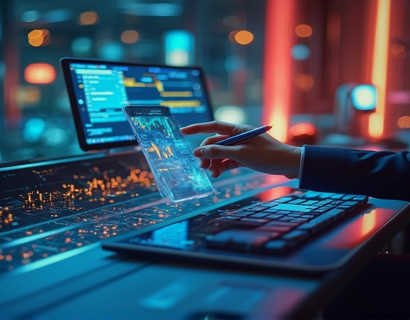Unlocking Decentralized Potential: Leveraging AI and Crypto for Next-Gen Digital Transformation
The digital landscape is undergoing a profound transformation, driven by the convergence of artificial intelligence (AI) and cryptocurrency. This convergence is not just a technological advancement but a paradigm shift that promises to redefine how we interact with digital applications and services. The integration of AI and crypto is unlocking new possibilities for decentralized innovation, offering a more connected, intelligent, and secure future. This article explores the intricate relationship between these two revolutionary technologies and their impact on the next generation of digital transformation.
The foundation of this transformation lies in the unique properties of blockchain technology, the backbone of cryptocurrency. Blockchain's decentralized nature eliminates the need for intermediaries, ensuring transparency, security, and immutability. When combined with AI, which excels in data analysis, pattern recognition, and autonomous decision-making, the potential for innovation becomes immense. Together, AI and crypto are paving the way for decentralized applications (dApps) that are more efficient, resilient, and user-centric.
Decentralized Applications: The New Frontier
Decentralized applications, or dApps, are software applications that run on a blockchain network rather than on a central server. This decentralized architecture provides several advantages over traditional applications. First, dApps are inherently more secure due to the distributed nature of blockchain, making them less vulnerable to hacks and data breaches. Second, they offer greater transparency as all transactions and data are recorded on a public ledger, accessible to anyone. Third, dApps reduce costs by eliminating intermediaries, leading to more efficient and cost-effective services.
The integration of AI into dApps further enhances their capabilities. AI can process vast amounts of data to provide insights, automate tasks, and improve user experiences. For instance, AI-driven chatbots in dApps can offer personalized customer support, while machine learning algorithms can optimize resource allocation and predict user behavior. This synergy between AI and blockchain is creating a new class of applications that are not only more intelligent but also more trustworthy and user-friendly.
Enhancing User Experience through AI and Crypto
One of the most significant benefits of combining AI and crypto is the enhanced user experience. Traditional applications often suffer from slow response times, data privacy concerns, and limited functionality. In contrast, dApps powered by AI and blockchain can provide seamless, real-time interactions. AI algorithms can analyze user data to tailor experiences, ensuring that each user receives personalized content and services. Additionally, the use of smart contracts in dApps automates processes, reducing manual intervention and increasing efficiency.
Data privacy is another critical aspect where AI and crypto intersect. Blockchain's decentralized nature ensures that user data is not stored in a single location, reducing the risk of large-scale data breaches. AI can further enhance privacy by implementing advanced encryption techniques and zero-knowledge proofs, allowing users to verify transactions without revealing sensitive information. This combination not only protects user data but also builds trust, a crucial factor in the adoption of new technologies.
Smart Contracts: Automating Trust
Smart contracts are self-executing contracts with the terms of the agreement directly written into code. They run on blockchain networks, ensuring that all parties adhere to the agreed terms without the need for a central authority. This automation of trust is a game-changer in various industries, from finance and supply chain to healthcare and real estate. When combined with AI, smart contracts become even more powerful, as AI can predict and adapt to changing conditions, ensuring that contracts remain relevant and effective.
For example, in the supply chain industry, smart contracts can track the movement of goods in real-time, ensuring transparency and accountability. AI can analyze this data to optimize logistics, predict delays, and identify potential bottlenecks. This integration not only streamlines operations but also enhances trust among all parties involved.
Financial Innovations: Crypto and AI in Finance
The finance sector is one of the most impacted areas by the convergence of AI and crypto. Traditional financial systems are often slow, expensive, and opaque. Decentralized finance (DeFi) platforms, powered by blockchain and AI, are revolutionizing the way financial services are delivered. DeFi offers a range of services, including lending, borrowing, trading, and insurance, all accessible through dApps.
AI plays a crucial role in enhancing the efficiency and security of DeFi. Machine learning algorithms can analyze market trends, predict price movements, and optimize trading strategies. AI-driven risk management systems can identify and mitigate potential threats, ensuring a more stable financial environment. Moreover, AI can help in compliance and regulatory adherence by monitoring transactions and detecting suspicious activities.
Crypto assets, such as stablecoins and NFTs, are also benefiting from AI. Stablecoins, which are designed to maintain a stable value, can be managed more effectively with AI algorithms that adjust supply based on market demand. NFTs, or non-fungible tokens, leverage AI to create unique digital assets with verifiable provenance, opening new avenues for artists, collectors, and businesses.
Healthcare Transformation: AI and Crypto in Medicine
The healthcare industry is another sector where the combination of AI and crypto is making a significant impact. Patient data management, medical research, and healthcare delivery are all being transformed by these technologies. Blockchain ensures that patient data is securely stored and shared among authorized parties, enhancing data integrity and privacy. AI algorithms can analyze vast amounts of medical data to identify patterns, predict disease outbreaks, and personalize treatment plans.
Crypto assets, such as medical tokens, can facilitate the exchange of healthcare services and rewards. For instance, patients can earn tokens for participating in clinical trials or sharing their health data, which can be redeemed for medical services or other incentives. This tokenization of healthcare services not only incentivizes participation but also creates a more efficient and patient-centric system.
Challenges and Considerations
While the potential of AI and crypto in driving digital transformation is immense, there are several challenges that need to be addressed. Regulatory uncertainty remains a significant barrier, as governments worldwide are still grappling with how to regulate these emerging technologies. Ensuring compliance while fostering innovation is a delicate balance that requires collaboration between technologists, policymakers, and industry leaders.
Scalability is another critical issue. Blockchain networks, particularly those used for dApps, often face limitations in transaction throughput and processing speed. Advances in blockchain technology, such as layer 2 solutions and sharding, are addressing these scalability concerns, but more work is needed to support widespread adoption.
Security, while enhanced by blockchain, is not immune to risks. Smart contract vulnerabilities and phishing attacks remain prevalent threats. Continuous monitoring, robust security protocols, and user education are essential to mitigate these risks.
Future Outlook: The Road Ahead
The future of AI and crypto integration holds immense promise. As technology continues to evolve, we can expect more sophisticated dApps that seamlessly integrate AI-driven insights and automation. The rise of Web 3.0, a decentralized internet powered by blockchain, AI, and other emerging technologies, is on the horizon. Web 3.0 will redefine how we interact online, offering a more secure, private, and user-controlled digital experience.
Moreover, the convergence of AI and crypto is likely to spur new industries and business models. From decentralized autonomous organizations (DAOs) to AI-powered governance systems, the possibilities are vast. The key to unlocking this potential lies in fostering a collaborative ecosystem where innovators, developers, and users work together to build a more decentralized and intelligent future.
In conclusion, the integration of AI and crypto is not just a technological trend but a fundamental shift in how we approach digital transformation. By leveraging the strengths of both technologies, we can create a more secure, efficient, and user-centric digital world. As we continue to explore and harness this convergence, the future looks brighter and more interconnected than ever before.



